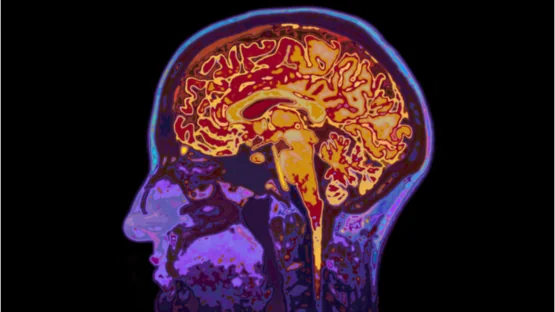Cardiologists, epidemiologists, and other researchers publishing in Aging have discovered that epigenetic aging and brain scans can be combined to accurately predict cognitive decline.
Two entirely different measurements
The ongoing CARDIA study was started in 1985 to monitor coronary artery risk development in young adults (who are no longer young). This large cohort has been repeatedly analyzed with multiple metrics, and this study took an interest in two measurements of epigenetic aging (taken in 2000 and 2005) along with two brain scans done in 2010 and 2015.
Fortunately, it is possible to use modern epigenetic analyses on older epigenetic data. While other clocks were also examined, the researchers focused most prominently on the well-known GrimAge, a predictor of all-cause mortality that has also been found to be associated with brain health in previous research [1].

Read More
The researchers also used an entirely different biomarker, Spatial Pattern of Atrophy for Recognition of Brain Age (SPARE-BA), which is a machine learning algorithm that uses imaging to detect brain deterioriation. As expected, this marker is associated with verbal fluency and attention problems [2].
When used to measure the acceleration of biological aging compared to chronological aging, these biomarkers are termed GrimAA and SPARE-BAA. Despite being associated with brain aging, these two biomarkers are not strongly correlated with each other, and this surprising finding led the researchers of this study to combine these two biomarkers into a unified analysis.
To measure cognition, the researchers chose the well-known Stroop test, which uses words in different colors than the words represent, the RAVLT long-delay recall test, and the Digit Symbol Substitution Test (DSST), which maps numbers to symbols.
Each marker is already powerful
Analyzing GrimAA findings compared to cognitive decline, the researchers found that the 2005 GrimAge results were strongly associated with the 2010 cognitive testing results and that the 2000 GrimAge results were, interestingly, even more strongly associated with the 2015 cognitive testing on both the Stroop and DSST cognitive biomarkers.
Similarly, the 2010 SPARE-BAA results were able to significantly predict 2015 measurements on Stroop and DSST, and cross-sectional analyses also significantly correlated SPARE-BAA to cognitive decline, particularly the 2015 results.
Combining the 2005 GrimAA results and the 2015 SPARE-BAA results yielded the best measurement that the researchers were able to find. Other combinations offered no benefit over GrimAge alone.
Conclusion
The researchers make a number of conclusions related to epigenetic aging and physical brain aging. Importantly, they point out that changes to brain synapses are governed by epigenetic alterations [3], which can explain a direct association between GrimAge and the cognitive results. Other potential correlations, such as inflammation, were also suspected.
While the CARDIA study used a large and wide-ranging cohort, the researchers note that epigenetic measurements were not taken at younger ages and that unmeasured cofactors might have biased the results, a common concern for longitudinal studies such as this one. Despite these potential issues, however, this study inspires confidence that it may be possible to develop combined biomarkers that examine both epigenetics and physical morphology in order to get a better picture of aging.
Literature
[1] Hillary, R. F., Stevenson, A. J., Cox, S. R., McCartney, D. L., Harris, S. E., Seeboth, A., … & Marioni, R. E. (2021). An epigenetic predictor of death captures multi-modal measures of brain health. Molecular psychiatry, 26(8), 3806-3816.
[2] Eavani, H., Habes, M., Satterthwaite, T. D., An, Y., Hsieh, M. K., Honnorat, N., … & Davatzikos, C. (2018). Heterogeneity of structural and functional imaging patterns of advanced brain aging revealed via machine learning methods. Neurobiology of aging, 71, 41-50.
[3] Barter, J. D., & Foster, T. C. (2018). Aging in the brain: new roles of epigenetics in cognitive decline. The Neuroscientist, 24(5), 516-525.





